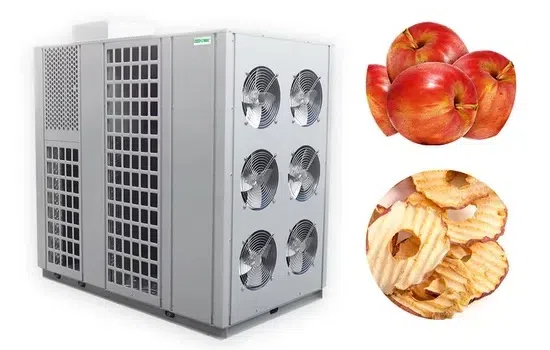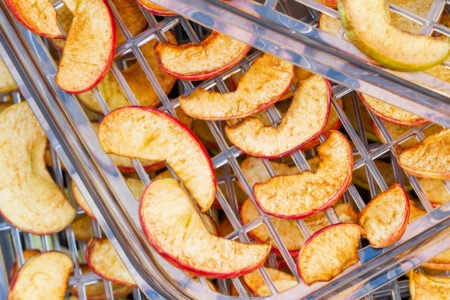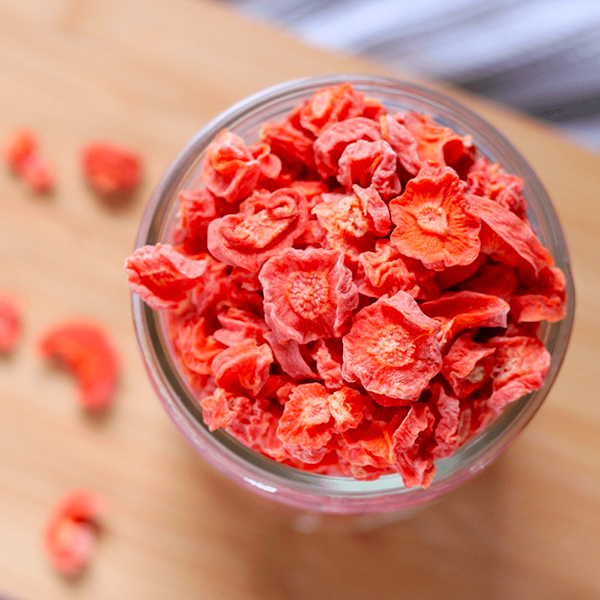
Content Menu
● Understanding Food Dehydration
● Benefits of Using a Food Dehydrator
● Key Features to Consider
>> 1. Type of Dehydrator
>> 2. Fan Location
>> 3. Temperature Control
>> 4. Capacity
>> 5. Material Quality
>> 6. Noise Level
● Popular Brands to Consider
● How to Use a Food Dehydrator
● Common Foods to Dehydrate
● Tips for Successful Dehydrating
● Nutritional Benefits of Dehydrated Foods
● Storage Tips for Dried Foods
● Conclusion
● FAQ
>> 1. What is the best temperature for dehydrating fruits?
>> 2. How long does it take to dehydrate meat?
>> 3. Can I dehydrate frozen fruits?
>> 4. Do I need to pre-treat fruits before dehydrating?
>> 5. How should I store dehydrated foods?
● Citations:
Food dehydrators are essential appliances for preserving fruits, vegetables, meats, and herbs by removing moisture. Choosing the right food dehydrator can significantly impact the quality of your dried products. This guide will help you understand the key features to consider when selecting a food dehydrator, ensuring you make an informed decision.

Understanding Food Dehydration
Dehydration is a method of food preservation that involves removing moisture from food to inhibit the growth of bacteria, yeast, and mold. The process retains the food's nutrients, flavor, and color while extending its shelf life.
Benefits of Using a Food Dehydrator
- Preservation: Extends the shelf life of seasonal produce.
- Healthy Snacking: Create nutritious snacks without preservatives.
- Cost-Effective: Reduce food waste and save money by preserving excess produce.
- Versatility: Dehydrate a wide variety of foods including fruits, vegetables, herbs, and meats.
Key Features to Consider
When selecting a food dehydrator, consider the following features:
1. Type of Dehydrator
There are two main types of dehydrators:
- Stackable Tray Dehydrators: These are compact and often more affordable. They consist of multiple trays stacked on top of one another. Airflow can be uneven unless rotated frequently.
- Box Style Dehydrators: These have a horizontal airflow system that ensures even drying. They typically come with a fan and heating element located at the back or side.
2. Fan Location
The fan's position affects drying efficiency:
- Top Fan: Prevents food drippings from clogging the fan and ensures even airflow.
- Bottom Fan: More prone to clogging but usually cheaper. Requires more maintenance.
3. Temperature Control
Adjustable temperature settings are crucial for different types of foods. Look for models that allow you to set temperatures between 95°F (35°C) and 165°F (74°C) to accommodate various dehydration needs.
4. Capacity
Choose a dehydrator based on your production needs:
- Small Capacity: Ideal for occasional use or small batches (4-6 trays).
- Large Capacity: Suitable for bulk drying (up to 20 trays).
5. Material Quality
Trays made from stainless steel or BPA-free plastic are preferable as they are more durable and easier to clean.
6. Noise Level
Some dehydrators can be noisy during operation. If noise is a concern, look for models known for quieter operation.

Popular Brands to Consider
Several brands are well-regarded in the market for their reliability and performance:
- Nesco: Known for budget-friendly options with good performance.
- Excalibur: Offers high-end models with superior airflow and capacity.
- COSORI: Praised for its sleek design and user-friendly features.
- Magic Mill: Offers excellent performance with quiet operation.
How to Use a Food Dehydrator
Using a dehydrator is straightforward:
1. Preparation: Wash and cut fruits or vegetables into uniform pieces.
2. Blanching (Optional): For certain vegetables, blanching can help preserve color and nutrients.
3. Arrange on Trays: Place food items in a single layer on the trays without overcrowding.
4. Set Temperature and Time: Adjust according to the type of food being dehydrated.
5. Monitor Progress: Check periodically for doneness; most foods should be dry but not brittle.
Common Foods to Dehydrate
Here are some popular choices for dehydration:
- Fruits: Apples, bananas, strawberries
- Vegetables: Carrots, zucchini, bell peppers
- Herbs: Basil, thyme, parsley
- Meats: Beef jerky, chicken strips
Tips for Successful Dehydrating
To maximize your dehydrating success, consider these tips:
- Dehydrate Similar Items Together: Always dehydrate items that require similar temperatures together in one batch to ensure even drying[1].
- Cut Uniformly: To ensure even drying, cut fruits, vegetables, or meats into uniform pieces; using a mandoline can help achieve consistent slices[1].
- Rotate Trays Regularly: If using stackable trays, rotate them every few hours to promote even drying throughout all layers[4].
- Use Non-Stick Spray or Liners: Before placing food on trays, spray them with non-stick cooking spray or use non-stick sheets to ease cleanup[1][4].
- Monitor Dryness Carefully: Ensure that foods are completely dry before storing them; sticky or moist foods should be returned to the dehydrator[1].
Nutritional Benefits of Dehydrated Foods
Dehydrating food not only preserves it but also retains its nutritional value:
- Dried fruits maintain their vitamins and minerals while providing concentrated energy.
- Fiber content increases in dried vegetables, aiding digestion[5].
Research indicates that dehydrated foods can help reduce the risk of certain cancers by activating beneficial compounds during the drying process[5]. Additionally, they serve as quick energy sources due to their concentrated calorie content[5].
Storage Tips for Dried Foods
Proper storage is crucial for maintaining the quality of your dried foods:
1. Store in airtight containers or vacuum-sealed bags to prevent moisture absorption.
2. Keep in a cool, dark place to extend shelf life; ideally below 70°F (21°C).
3. Use glass jars or silicone bags for easy access and visibility of stored items.
Conclusion
Choosing the right food dehydrator involves understanding your needs regarding capacity, type, temperature control, and material quality. By considering these factors and following best practices for dehydration, you can enjoy delicious homemade snacks while preserving your favorite foods efficiently. With proper usage and storage techniques, a food dehydrator becomes an invaluable tool in any kitchen.

FAQ
1. What is the best temperature for dehydrating fruits?
Most fruits dehydrate best at temperatures between 135°F (57°C) and 145°F (63°C).
2. How long does it take to dehydrate meat?
Dehydrating meat can take anywhere from 4 to 12 hours depending on thickness and moisture content.
3. Can I dehydrate frozen fruits?
Yes, but it's recommended to thaw them first before dehydrating for better results.
4. Do I need to pre-treat fruits before dehydrating?
Pre-treating with lemon juice or ascorbic acid can help prevent browning in fruits like apples or peaches.
5. How should I store dehydrated foods?
Store in airtight containers in a cool, dark place; vacuum sealing can extend shelf life further.
Citations:
[1] https://www.cnet.com/pictures/tips-for-using-your-new-dehydrator/
[2] https://etsolutions.in/10-amazing-benefits-of-electrical-food-dehydrator-machines/
[3] https://thruhikers.co/dehydrators/
[4] https://www.backpackingchef.com/dehydrating-food.html
[5] https://www.webmd.com/diet/dehydrating-food-good-for-you
[6] https://www.choice.com.au/home-and-living/kitchen/benchtop-cooking/buying-guides/food-dehydrators
[7] https://learn.eartheasy.com/guides/a-beginners-guide-to-dehydrating-food/
[8] https://www.bestbuy.com/discover-learn/10-reasons-to-buy-a-food-dehydrator/pcmcat1634332391134
[9] https://www.seriouseats.com/best-food-dehydrators-5216308
[10] https://www.freshoffthegrid.com/dehydrating-food/
[11] https://brodandtaylor.com/pages/dehydrating











